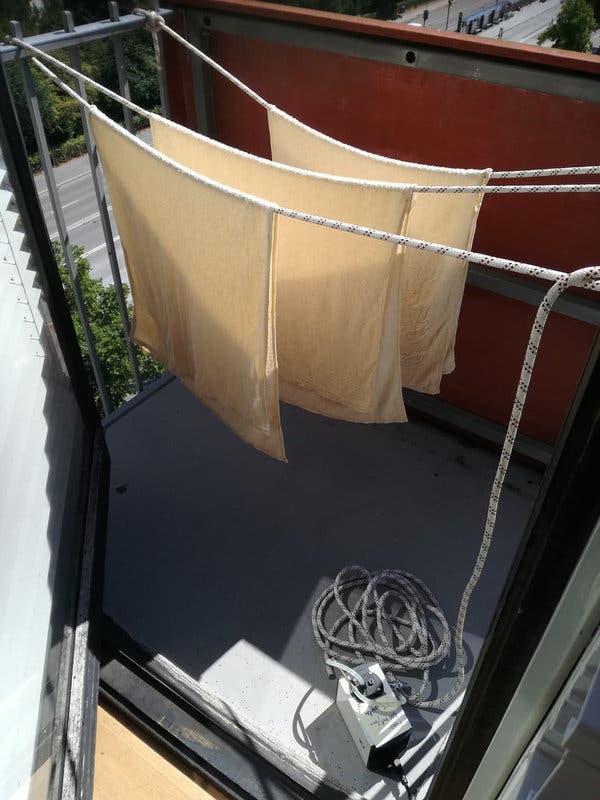People have written poems about it. It has been imitated by candles and air fresheners. At least one person has even fought in court for the right to produce it naturally.
It’s the smell of line-dried laundry.
Some atmospheric chemists like that scent, too. In a paper published this year in Environmental Chemistry, researchers examined line-dried towels at the molecular level, to try to pinpoint the source of their specific fragrance.
Silvia Pugliese led the research while she was a master’s student at the University of Copenhagen. When Ms. Pugliese was a child, her mother line-dried laundry, and she still does it whenever she can.
“The fresh smell reminds me of home,” she said. So she was excited to rigorously pursue such an everyday research subject.
In between their more official thesis work, Ms. Pugliese and two labmates, with their adviser Matthew Stanley Johnson, commandeered two little-used areas of the university’s chemistry building — a dark, empty office and a small, fifth-floor balcony — and obtained materials, including ultrapurified water and a set of cotton towels from Ikea.
Each towel got washed three times in the water, and then hung out: inside the office, on the balcony under a plastic shade or on the balcony in the sun.
When they came across the drying racks, “a lot of colleagues laughed,” Ms. Pugliese said. “But we had a lot of support.”
When a towel finished drying, the researchers sealed it in a bag for 15 hours. As the towel sat in the bag, they sampled the chemical compounds it released into the air around it. The researchers performed similar sampling on an empty bag, an unwashed towel and the air around the drying sites.
By comparing the experimental towels’ chemical profiles to those controls and to each other, the researchers were able to tease out which compounds popped up only when they hung wet towels in the sun, Ms. Pugliese said.

Why is that? It may have to do with exposure to ozone, an atmospheric chemical that can transform some common chemicals into those aldehydes and ketones.
A more fundamental contribution, she thinks, may come from the sun itself. When exposed to ultraviolet light, certain molecules “get excited” and form highly reactive compounds called radicals, Ms. Pugliese said. Those radicals then recombine with other nearby molecules, processes that often lead to the creation of aldehydes as well as ketones.
It’s possible that the water on a wet towel gathers a lot of these excitable molecules together, and then works “like a magnifying glass,” concentrating the sunlight and speeding up these reactions, Ms. Pugliese said.
Similar processes are likely occurring on any number of natural outdoor surfaces, including bare soil and individual blades of grass — perhaps part of the reason that sun after a rainstorm makes the world smell fresh. (Although the scent seems to last longer on clothes, potentially because aldehydes bond with cotton, said Ms. Pugliese.)
Ricardo López, a chemist at the Lab for Flavor Analysis and Enology at the University of Zaragoza in Spain who was not involved in the research, thinks the aldehydes and ketones may not tell the whole story.
“When testing for key flavor compounds, sometimes compounds in low concentrations are as important as those in high concentrations,” he said. Additional forms of testing might be helpful to get the full bouquet.
Ms. Pugliese has, for now, moved onto headier things — her doctoral research involves artificial photosynthesis — but she hopes to dig into similar topics in the future.
“I thought it was a really nice way to do science,” she said.
